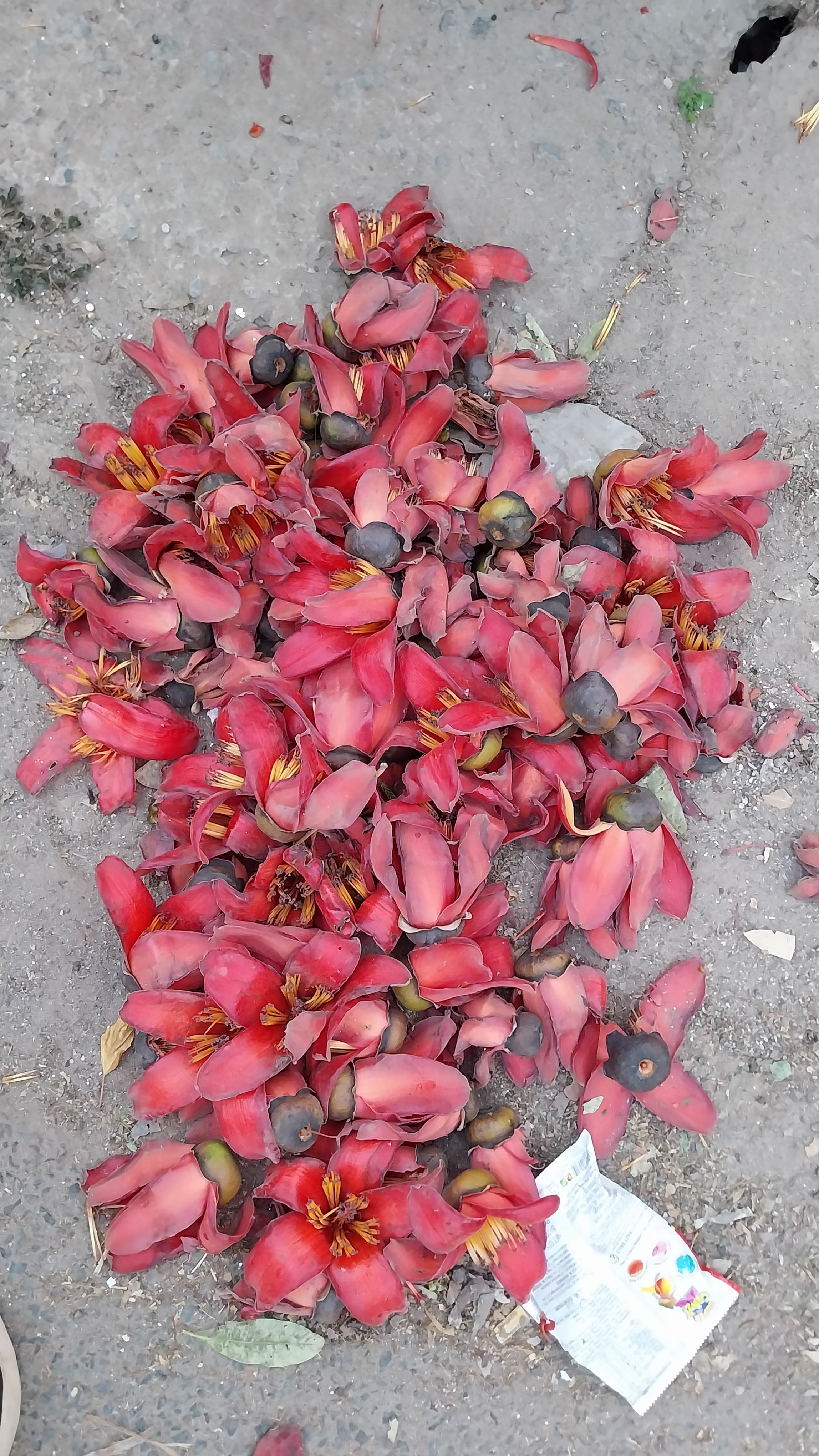In April, it rains cotton in Delhi. The source of this cotton is the Semal tree or silk cotton tree which botanists call Bombax ceiba. It is for its showy, starfish-like scarlet flowers which bloom from February to March that city planners have adorned Delhi’s roads and parks with Semal.

Semal flowers swept in a corner on a street
Standing neck to neck with the tall buildings of the city, its brilliantly red flowers give a burst of bright colour to Delhi’s dull landscape after a harsh winter. These showy flowers are amongst the first signs of spring in the city. At this time, Semal trees shed their leaves.
With only flowers remaining on the Semal trees, I find them to be a great spot for bird watching. The tree is alive with the orchestra of Parakeets, Barbets, Rufous tree pies, Crows, Babblers and Squirrels, which are difficult to miss even in the noisy streets of the city. Once, on a busy street, I saw a grey hornbill unexpectedly, perched atop a Semal tree, basking in the soft evening sun. Smaller birds like purple sunbirds and common tailor birds that are often heard instead of seen; can now easily be regarded on the Semal trees relishing the nectar from its blazing flowers.

A Semal tree
Enamoured by this chorus of birdsong, I once nearly slipped on a handful of fallen Semal flowers. The petals of these flowers are fleshy and smooth as if coated by wax. The cup-shape of the flowers and wax coating enables them to hold water which is what makes them so attractive to birds.
In return for nectar and water, the flowers are pollinated by its visitors. Once pollinated, a pod encapsulating seeds covered with cotton fibres develops and eventually bursts open and liberates the fibres. In the middle of April, the release of these seeds almost seems to happen overnight for in the mornings; the roads are covered with a carpet of cotton balls. These balls of cotton are perpetually moving; flowing and drifting with the wind or propelled along by a vehicle’s exhaust pipe. This carries the Semal’s seeds far and wide. Since most of Delhi is overtaken by concrete, with limited space for new trees, the fibres of Semal trees typically lay scattered on the roads. Sometimes they are picked up to be used as fillers for pillows, quilts and cushions. But most times, they just lay there, sleepily on the streets.
On a languid, and unusually humid evening in April last year, I was walking home when I noticed the wind starting to quicken. Overhead, clouds; grey with the city’s pollution gathered. It was going to rain. It drizzled only faintly, but the Semal’s fibres that had picked up with the wind compensated for the lack of rain. In my room, I spent the night plucking the cotton fibres that had clung to the warmth of my clothes.
All photos by Deepika Sharma
About the author: Deepika Sharma is a conservation practitioner currently working towards mitigating the loss of marine biodiversity in India.






Just noticed them little wisps in the air last week with joy (Bangalore)